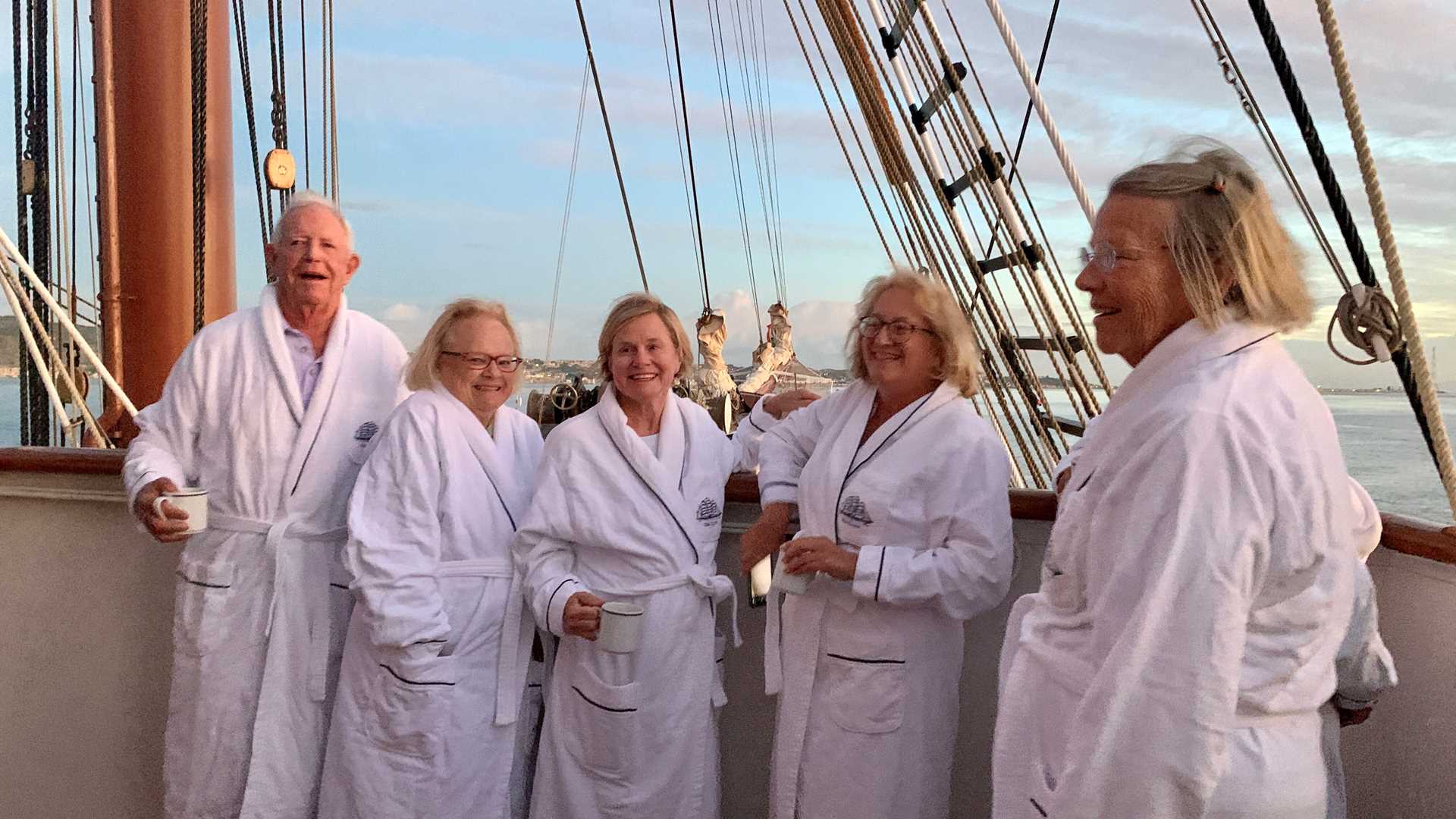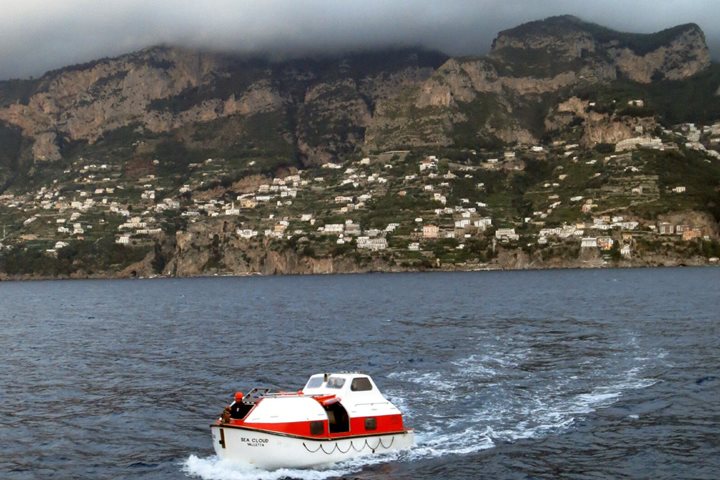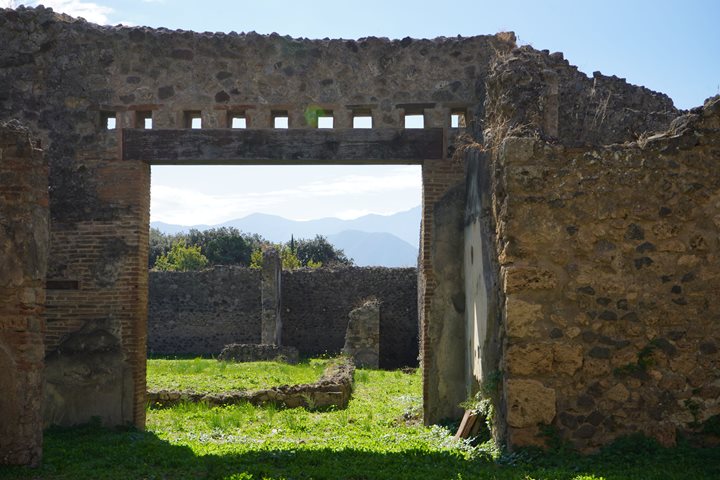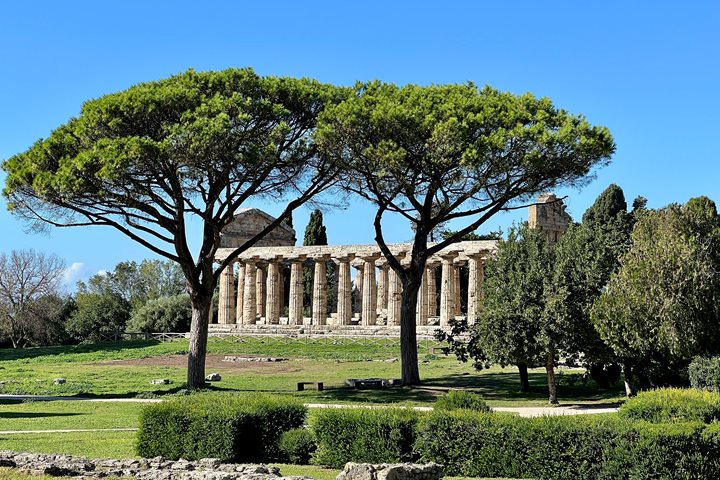Sea Cloud slipped through the Straits of Messina at sunrise, much to the delight of a group of bathrobe-clad “early risers” who witnessed our navigation through this narrow, legendary passage. The strong currents caused the ship to abruptly heel 5 degrees to port, demonstrating once again the power of Mother Nature. The winds were initially less than expected as we entered the Tyrrhenian Sea, but the 1.5-2.0 m swells we experienced were the outer edge of the strong weather front that was clearly visible off our starboard bow all morning. Captain John Svendsen gave an engaging presentation on sailing, seamanship, and the need to have a situational awareness of weather and currents so you can make a tall ship “dance” with the wind. Paula Tagle, our Expedition Leader and geologist, also gave a presentation on the tectonic nature of this corner of the Tyrrhenian Sea.
Sea Cloud passed through a few rain squalls as she approached the Aeolian Islands from the southeast, making way to our anchorage directly below the Spanish castello situated atop the ancient acropolis of Lipari Island. The archipelago is named after the Greek god of the winds and the sheer cliffs of pumice and rock, smoking fumaroles, and craggy volcanic plugs jutting out of the sea that speak to their volcanic origins and nature.
The sun came out as the Zodiacs were lowered so we could make our way to our landing at the Marina Corta, the smallest of the two ports. We followed our guides through this incredibly picturesque little town with its narrow basalt-paved lanes and soft, pastel-colored limestone houses to board buses in Marina Lungo for our drive around the island. We made a few viewing stops on our circumnavigation of the island, which enabled us to see all the islands in the archipelago, including Vulcano (with its smoking crater) and Stromboli, which erupted as if on cue at each stop. On our return to the town of Lipari, we had a choice of wandering the streets to enjoy the laidback island life or hiking up to the castle to see the wonderful archaeological museum that houses a rich collection of both prehistoric and classical finds from the island. The museum has an outstanding collection of Greek black and red figure vases that were found in a necropolis (cemetery of the ancient city), amphorae from ancient shipwrecks, and miniature masks and votive mythological figures from classical Greek plays. After a marvelous Italian deck buffet, we all grabbed our cameras as Sea Cloud approached Stromboli to see if the volcano was going to put on a light show for us. It did not disappoint! The “Lighthouse of the Mediterranean” was already lit up as we neared the island and stayed in a constant state of eruption for the next hour as we drifted off its north coast. It was hard to tear ourselves away, but eventually the engines started up so we could make our way to our next stop, the ancient city of Paestrum on the Italian mainland.







